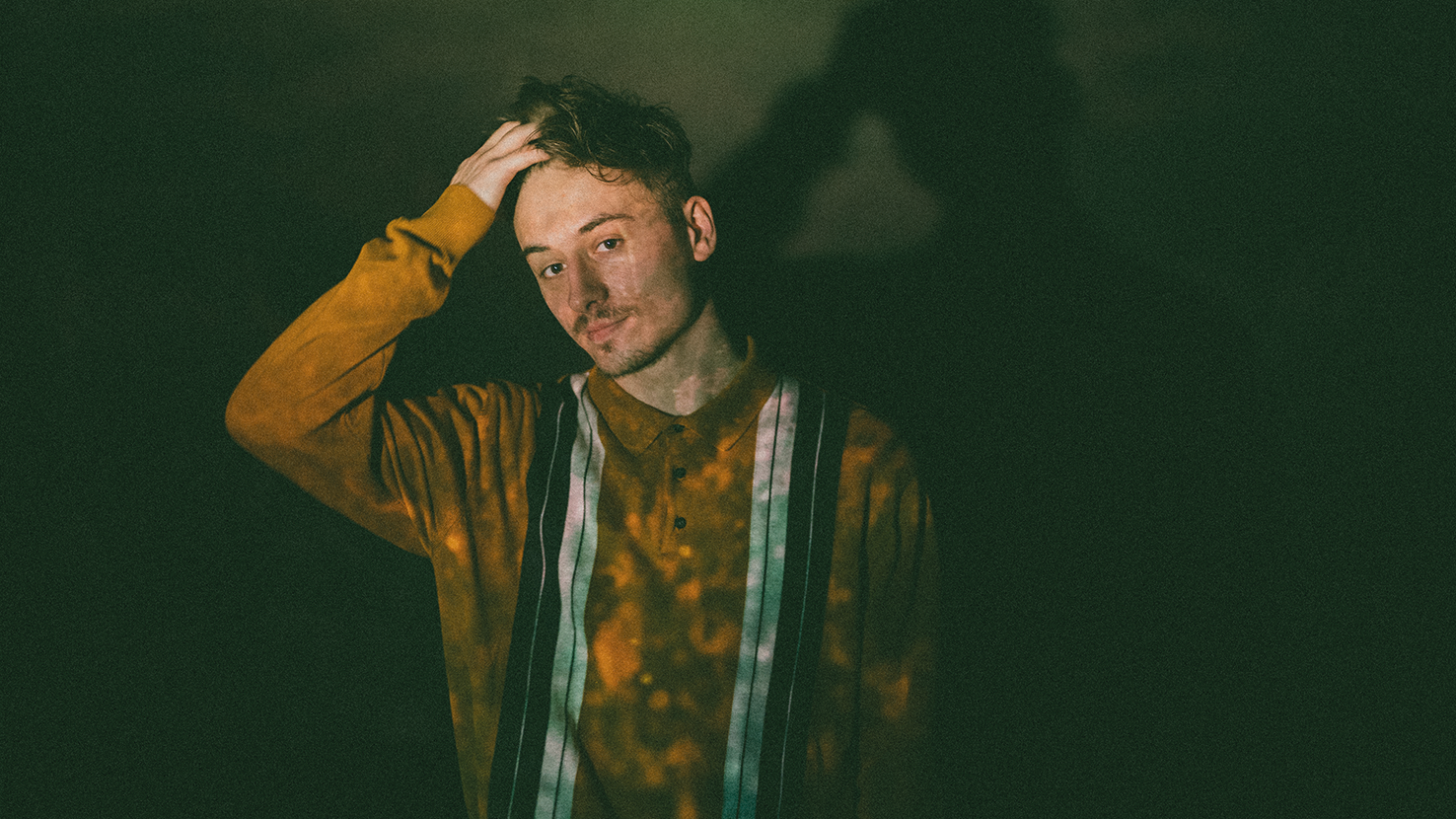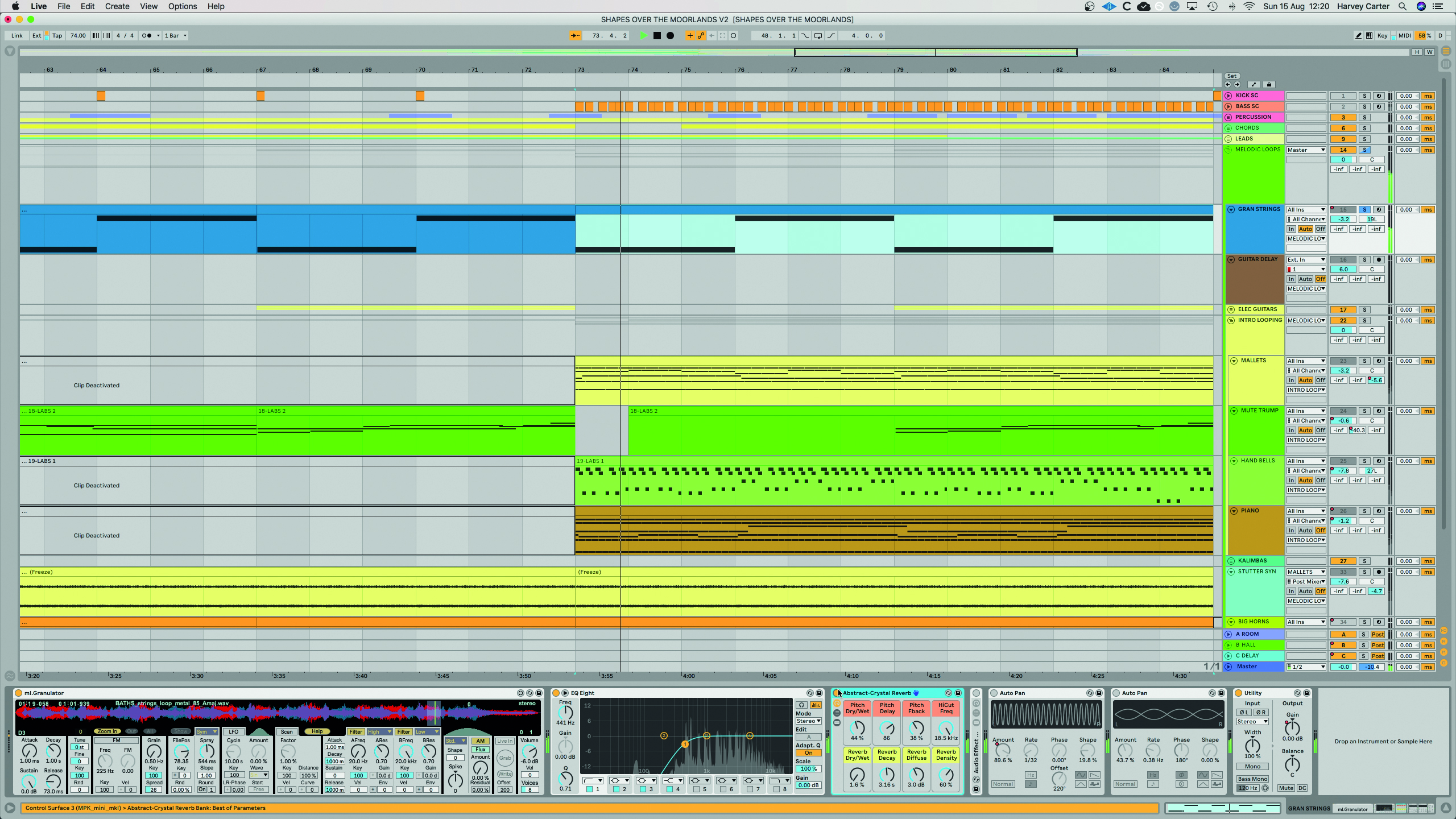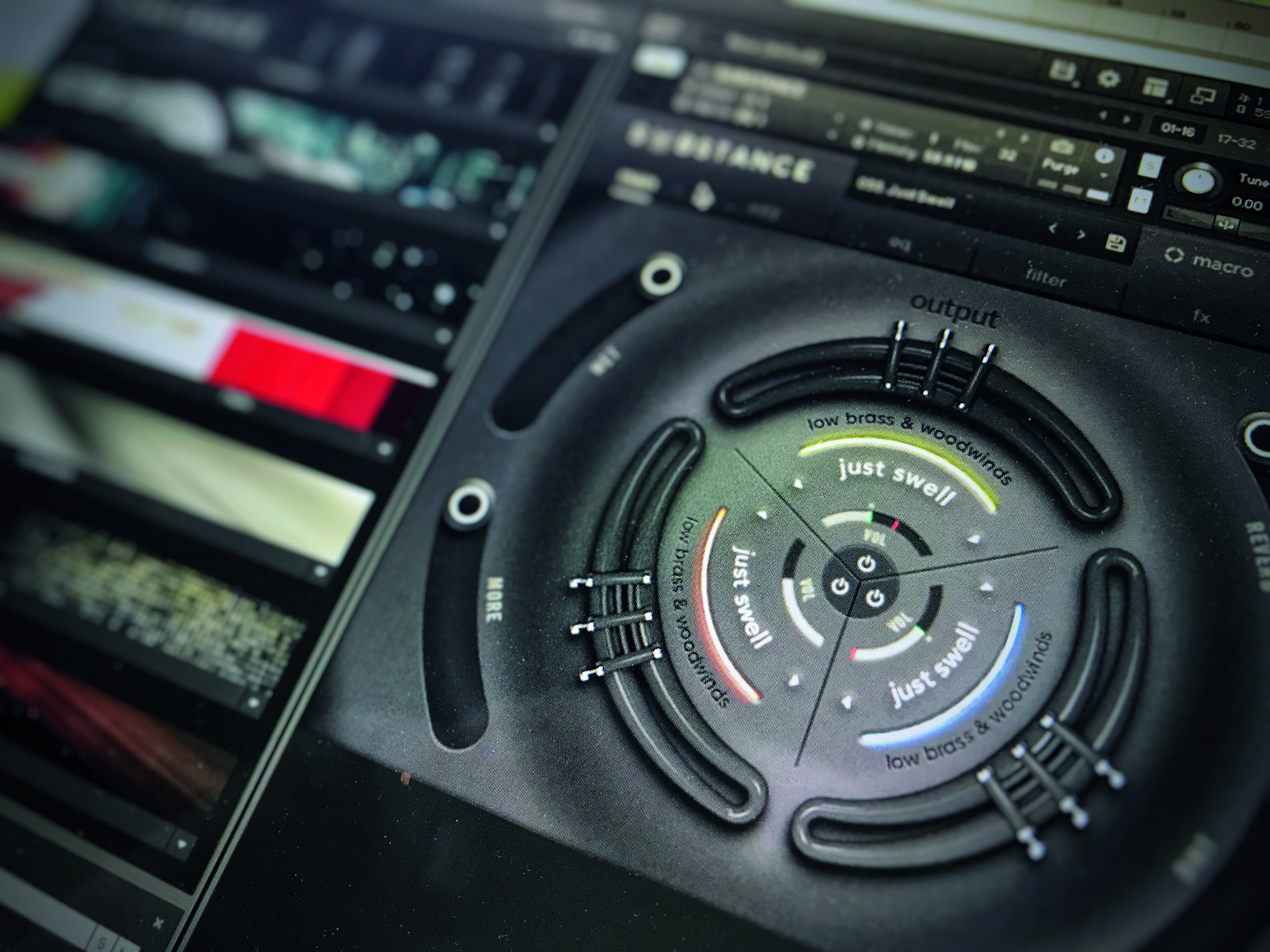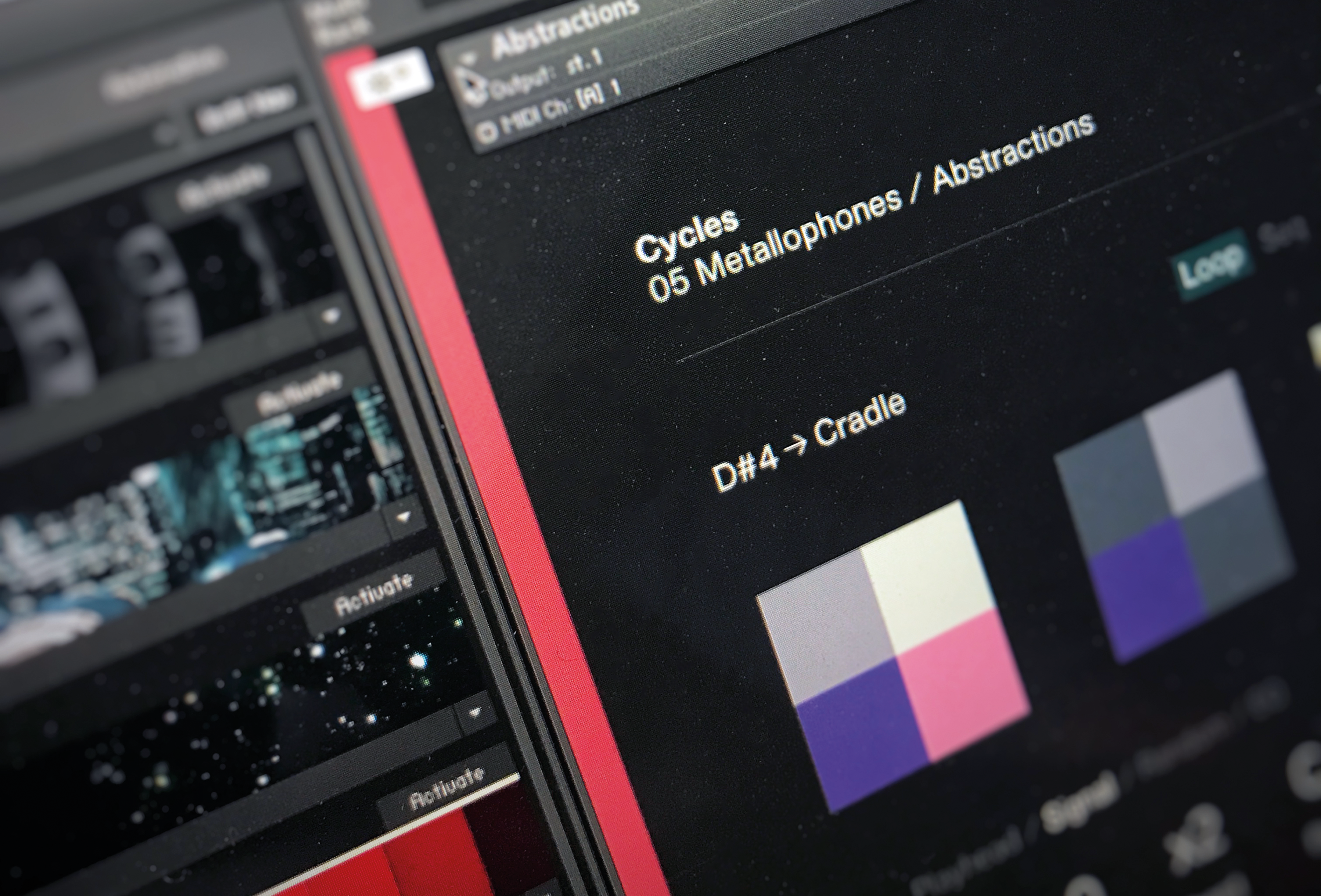The Track: Tutara Peak on the making of Shapes Over The Moorlands
Harvey Carter takes us through the nuts and bolts of how he produced a standout track from his latest EP, Tansuri

Eclectic electronica exponent Harvey Carter aka Tutara Peak has recently risen to prominence with a release on Flying Lotus’ Brainfeeder and a remix for legendary UK dance act Hybrid. We caught up with Harvey to find out how he created the sonically enchanting Shapes Over the Moorlands from his recent, self-published Tansuri EP.
You use a few different ROMpler instruments in the video, particularly Kontakt-based ones. Is that something you do a lot?
“I’ve always used Kontakt, though I sometimes make my own little instruments in Ableton Live’s Sampler. When it comes to using Kontakt, I’ll use it for a bunch of different things.
"Orchestral, string and brass libraries, anything like that is always Kontakt. I’ve been using a lot of the Slate + Ash stuff, which are essentially plugins, but in Kontakt instrument form. So I’ll use Kontakt for various things, but essentially they’re all sound sources to manipulate.”
Do you start with sound design, or musical ideas first?
“Whenever I do a new track, I try to use a different approach, which helps keep things fresh. So sometimes, as was the case on this song, I started with Kontakt libraries just to get a loop going.
"Then usually things springboard from there, and go off in different directions. Sometimes I’ll come up with something like a little guitar patch, and then one morning I’ll sit down and decide, ‘OK, let’s see if we can give some structure to this thing’.
Get the MusicRadar Newsletter
Want all the hottest music and gear news, reviews, deals, features and more, direct to your inbox? Sign up here.
"Then usually things just happen after that. I like to give some limitations and guidelines to what I’m doing, but I also like to let the song write itself to a certain degree. I think it just helps it keep a more natural feeling, not so forced.”

In the video you describe the conceptual idea behind this track. Do you always begin with a concept?
“It depends who I spend time around really. I sometimes have these concepts come to me randomly, or I have some that come in a dream, for example. For this track in particular, I was sitting with a friend and we were just discussing random things.
"He was tapping the table, and you’d hear the tiny little sounds of his nails on the table. And it had something of a rhythm, and I had the idea, ‘how would it sound if we had lots of those little sounds working in tandem? Like a jigsaw puzzle?’
"Then we both thought, ‘how would it sound if we could make something big, sounding out lots of little things?’. Those sorts of thoughts definitely influenced me quite a lot during the songwriting process.”

As well as the virtual instruments, you have some of your own guitar playing on the track.
“I’ve only been really incorporating guitar into my music since around the beginning of last year. I’ve been a guitarist for years, but in regards to incorporating it into electronic music, I find a lot of it has been quite hit and miss. So, I’ve had to work at getting a processing chain that works and feels natural to play as well.
“When I started, I didn’t have an amp or anything, so I had to do everything in-the-box. So, I did a lot of stuff with the UAD primarily. I have a UAD Apollo interface, and I usually have a 610 running in the preamp section going into an LA2A compressor, just to even out the attack of the guitar.
"Then an EQ just to balance it out. I’d usually put an API Vision channel strip on there, just using the compression. Then EQ after that, just to get an overall guitar tone that feels good to play. I have to do a lot of stuff once I get the sound into Ableton Live.
"Over the whole course of this EP, I’ve gone through loads of different ways of processing guitar, and I’ve found something that I feel like I can stick with now, that is until I get more pedals or something!”

There’s a Korg minilogue in there; what other hardware do you use?
“I’ve got a bunch of random little things. One of the things I use regularly is the Behringer Poly D. What I love about analogue synths, pre-21st century, is that you didn’t always have access to presets. You had to patch it up yourself, and I quite like that approach to sound design.
"I also really love the Organelle by Critter & Guitari. It’s essentially a computer in a musical box; it’s got some great emulations of Mutable Instruments Clouds and Rings which sound great.
"The other thing I use practically every day is the Empress Effects Zoia modular effects pedal. It does everything I want an effects processor to do, and it can do parallel patching or serial patching, which is unique. Plus the processing power is actually decent. The DSP effects just sound incredible!”
The gear
Hardware
- Apple iMac
- UAD Apollo
- Genelec 8040B x2
- Korg minilogue
- Behringer Poly D
Software
- Ableton Live
- Native Instruments Kontakt
- Spitfire Audio LABS
- FabFilter plugins
- UAD plugin


Future Music is the number one magazine for today's producers. Packed with technique and technology we'll help you make great new music. All-access artist interviews, in-depth gear reviews, essential production tutorials and much more. Every marvellous monthly edition features reliable reviews of the latest and greatest hardware and software technology and techniques, unparalleled advice, in-depth interviews, sensational free samples and so much more to improve the experience and outcome of your music-making.
“A fabulous trip through all eight songs by 24 wonderful artists and remixers... way beyond anything I could have hoped for”: Robert Smith announces new Cure remix album
“I have an original 909 – every time I try to use it I feel like I’m ruining it”: House hero Riva Starr on his studio essentials and his love of analogue synths










